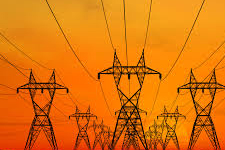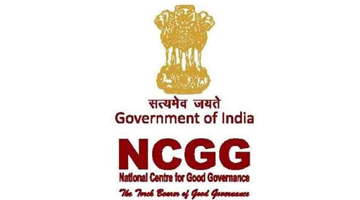CX - Power grid to whom electricity is sent for synchronization is to be treated as job worker - since electricity was returned back to factory there is good compliance - Credit availed on fuel used in generation of electricity cleared to Board is admissible: CESTAT
By TIOL News Service
NEW DELHI, JULY 13, 2015: THE Appellant is engaged in the manufacture of Steel Slabs, Ingots & Blooms. They set up a captive power plant in their factory. The electricity generated in the captive power plant was used in their factory and a portion of the same was sent to power grid, Haryana State Electricity Board (HSEB) (now DHBVNL). The Appellant was availing benefit of CENVAT Credit on inputs, input service and capital goods under CCR, 2004.
A SCN was issued seeking recovery of CENVAT Credit allegedly wrongly availed of Rs.54,38,492/- on the fuel used in the generation of electricity cleared to DHBVNL during the period 01.01.2005 to 30.06.2005.
The CCE, Rohtak confirmed the demand and imposed equivalent penalty and interest.
Before the CESTAT, the appellant inter alia submitted that a portion of the electricity generated was sent to power grid for synchronization and it was received back by the Appellant in their unit after synchronization; that the Power Grid charged 10% of the value of the electricity for providing facility of synchronization; that there is no dispute that the electricity sent to power grid was returned back to their factory and utilized in the manufacture of finished products and, therefore, reversal of credit on input furnace oil does not arise. It is also submitted that on the same issue, in their own case, the Tribunal had vide order dated 21.08.2008 - 2008-TIOL-2331-CESTAT-DEL set aside the Adjudication order and allowed the appeal.
It is further emphasized that Rule 4(5)(a) of CCR, 2004 allowed an assessee to remove the inputs or capital goods as such or after being partially processed outside of the factory premises to a job worker for further processing. In the present case, the Appellant sent the ‘electricity' to the power grid, which was received back in their factory and used in the manufacture of final product and, therefore, this too would come within the purview of Rule 4(5)(a) of the Rules, 2004.
The AR submitted that the Supreme Court had in case of Maruti Suzuki Ltd. - 2009-TIOL-94-SC-CX categorically observed that CENVAT Credit is not admissible on the inputs utilized in generation of excess electricity cleared to the grid. Further, Rule 2(k) of CCR, 2004 provided that input credit would be eligible for generation of electricity used in or in relation to manufacture of the final product or for any other purpose within the factory of production and, therefore, the Appellant ought to have reversed the credit to the portion of electricity wheeled out to the grid as per CCR.
The Bench observed that HSEB had permitted the Appellant for parallel operation of captive power plant installed at their factory subject to condition that the Appellant will not be allowed to supply/sell the energy so generated from their captive plant, without specific approval from the Board;that Wheeling charges in the form of energy will be done at 10% of the power injected from their captive power plant into the synchronisation system.
The Bench further noted that the General Manager of DHBVNL by letter dt.17.02.2006 had clarified that the excess energy generated cannot be treated as a sale of energy to the grid.
After extracting the order of the Tribunal dated 21.08.2008 (supra) and the decision of the apex court in Maruti Suzuki Ltd. & Ultratech Cement Ltd. - 2009-TIOL-95-SC-CX ,the CESTAT observed -
“8. In the present case, there is no sale of electricity to the power grid. It is also noted that the electricity sent to power grid was returned back to the Appellant, which was further used in the manufacture of final product. The Hon'ble Supreme Court categorically observed that the reversal of credit would be required on the wheeled out of electricity at a price to the joint venture/vendor etc. for manufacture. In the present case, there is no sale of electricity, and the same was returned back to their factory for consumption in their final product. So, we do not find any substance in the submissions of the learned Authorised Representative.”
In the matter of submission made by the AR that once electricity is wheeled out of the premises of the factory of the manufacturer, it is cleared from the factory; that its linkage with the manufacture breaks at that point and what was generated as electricity within the factory is not integrally connected to what was used in the manufacture of the final product and its nexus with the ultimate production of final product is missing and it is hit by Rule 2(k) of Rules, 2004, the CESTAT refused to accept this argument by observing as below -
"…it is settled law now that there is no requirement of one to one co-relation between input and final product under the MODVAT/CENVAT scheme. As per Rule 2(k) of Rules, 2004 "input" means all goods used in the factory by the manufacturer of the final product. It is seen that Rule 4(5)(a) of Rules, 2004 provides that the CENVAT Credit shall be allowed even if any input or capital as such or after being partially processed are sent to a job worker for further processing, testing etc or any other purpose, and it is established from the records produced by the manufacturer that the goods are received back in the factory. The expression "any other purpose" in Rule 4(5)(a) have wide amplitude. Thus, on reading of Rule 2(k) and Rule 4(5)(a) of the Rules, 2004, it is clear that the input as such or after partial process cleared from factory for job work and returned back, it would remain input. In the present case, the input namely fuel used in the electricity sent to power grid for synchronization who may be treated as job worker and received back in the factory and used in the manufacture of the final product, and it is within the purview of Rule 4(5)(a) of the Rules, 2004."
Deriving an analogy from the Tribunal decision in Sanghi Industries Ltd - 2014-TIOL-996-CESTAT-AHM, the Bench held -
"13. In the present case, we have already observed that the electricity sent for synchronization to power grid, would be treated as job worker. There is no dispute that the electricity was returned back to the Appellants factory, and there is a substantial compliance with the provisions of Rule 4(5)(a) of the Rules. So, the submission of learned Authorised Representative for the Revenue cannot be accepted on this issue also."
The order was set aside and the appeal was allowed with consequential relief.
(See 2015-TIOL-1397-CESTAT-DEL)














